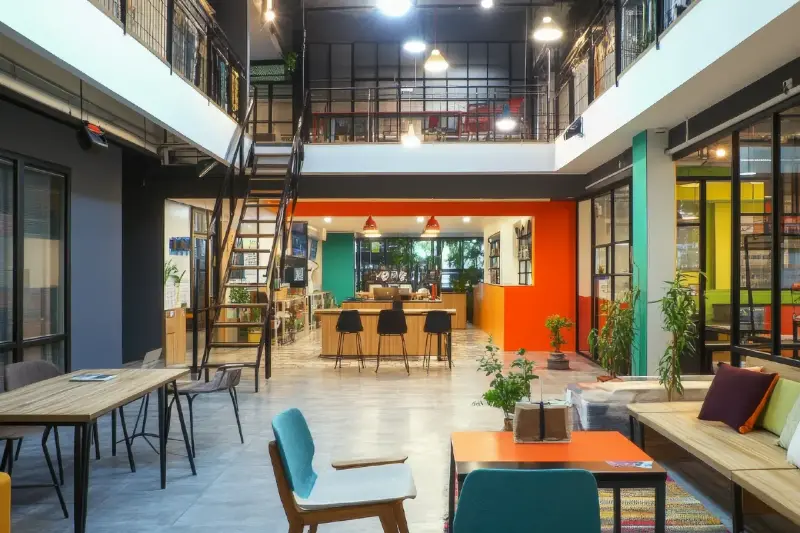
as the global workforce continues to evolve, the co-working culture is booming—but the spotlight has shifted beyond just tech hubs like san francisco and new york. in recent years, mid-sized cities across the united states, from des moines and greenville to boise and rochester, have seen a notable surge in co-working spaces and entrepreneurial activity. what was once considered a niche solution for freelance designers in dense metropolitan areas now anchors bustling downtowns in cities with populations between 100,000 and 500,000. so why is the co-working movement thriving in these locations, and what makes them unique magnets for this trend?
a key driver is the transformation of work itself. recent surveys by gallup and the u.s. census bureau show remote and hybrid roles becoming the standard, not the exception. as more people disengage from daily commutes to big-city offices, they're choosing to remain closer to home—or even relocate. mid-sized cities strike a compelling balance between opportunity and quality of life. affordable housing, shorter commutes, and vibrant cultural offerings are pulling in everyone from young tech workers to seasoned entrepreneurs. however, people don’t want to work in isolation. co-working spaces promise not just a desk, but a sense of community and connectivity that traditional offices—and makeshift home offices—often lack.
mid-sized cities, in particular, thrive on this sense of community. local business owners, remote workers, and solo entrepreneurs appreciate the opportunity to meet others in similar situations, fostering serendipitous connections that spark new ideas and collaborations. according to a 2023 report by the global workspace association, more than 70% of co-working members in non-metropolitan areas cited “networking and social interaction” as a primary reason for joining. these connections can be even more valuable in mid-sized cities, where traditional corporate infrastructure might be thinner, and word-of-mouth networks mean more.
economic development organizations in mid-sized cities have taken note of the power of co-working. city planners and private developers now actively invest in turning historic buildings and underused retail strips into modern, flexible workplaces. local government incentives—sometimes including rent subsidies or start-up funding—help attract operators like wework, industrious, and a variety of local brands. these public-private collaborations not only bring new life to downtowns but also encourage residency among highly skilled professionals who may otherwise look toward larger cities.
but there’s more to the co-working growth story than just urban redevelopment. within the walls of these shared spaces, business resources abound. many venues in these cities offer programming that goes well beyond high-speed wi-fi. think regular networking mixers, mentoring sessions, educational seminars, and access to legal, accounting, or marketing support. for small businesses and freelancers, this infrastructure is invaluable. it levels the playing field, making it easier for creative professionals, consultants, or first-time founders to launch and scale ventures without heading to the nearest metropolitan area.
an interesting fact is the diversity of the workforce tapping into these resources. while the early days of co-working had a reputation for being dominated by twenty-something tech workers, today’s spaces are filled with a mix of young professionals, parents who want to break from solo remote work at home, and even retirees starting second careers. some cities see growing demand from corporate “outposts”—small, satellite teams set up in these cities to tap into local talent pools or give employees flexibility.
the size and design of these spaces are also adapting to match regional cultures. in boise, co-working spaces incorporate cycling storage and outdoor patios to align with the city’s love for recreation. in the heart of the midwest, locations in places like omaha or st. louis frequently add family-friendly amenities, such as on-site childcare or play areas, responding to a growing population of working parents. the combination of local flavor and tailored services means members feel at home and are motivated to spend more time interacting than if they worked in a cookie-cutter office park.

another overlooked reason for the sustained interest is stability. national real estate experts have noticed that mid-sized city markets are less volatile than their major metropolitan counterparts, both in terms of cost and occupancy. in cities like baton rouge and fort wayne, co-working leases are more affordable, and waitlists are shorter, giving solo workers and small businesses the flexibility to scale up or down as needed. operators in these cities can commit to longer-term investments in their facilities and in member programming, without the fear of sudden mass exodus due to spiraling rents or economic downturns. this breeds more predictability for both members and managers.
co-working in these locales isn’t just for business. many serve as cultural and social anchors, hosting everything from art shows and open mic nights to weekend family markets. as such, these spaces often act as conduits for economic and social revitalization, helping restore a sense of vibrancy and shared purpose to neighborhoods that might otherwise struggle with vacant storefronts or declining foot traffic.
the drive toward environmental responsibility is also helping the trend. many mid-sized city co-working operations are housed in renovated buildings, promoting sustainability and reducing urban sprawl. local governments sometimes provide tax breaks or grants for green renovations, giving operators and members alike another reason to invest.
finally, the covid-19 pandemic accelerated shifting work preferences and introduced millions to the realities—both good and bad—of home offices. for many, returning to a traditional office is no longer appealing, but nor is continued isolation. co-working offers the “third place”—an in-between that’s professional, flexible, and social. in mid-sized cities, this perfect storm of economic development, community, affordability, and adaptability is powering a co-working renaissance that shows no sign of slowing.
as remote work, flexible lifestyles, and entrepreneurial ambition blend with the charms and opportunities of america’s heartland, the co-working phenomenon in mid-sized cities looks set to remain. behind every glass-walled conference room and communal coffee pot is a promise not just of productivity, but of a new way of building business, community, and personal connection—all on a distinctly local stage.
